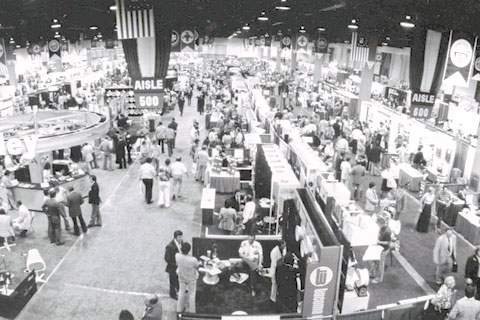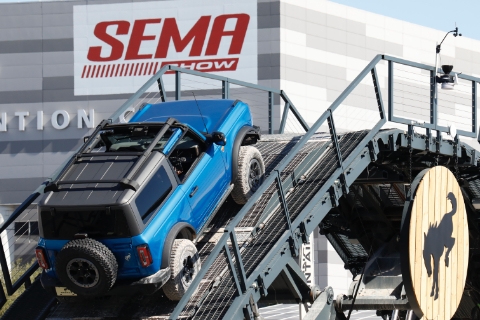BUSINESS
Powersports Market Trends
Remaining Tough and Agile Amid a Challenging Environment
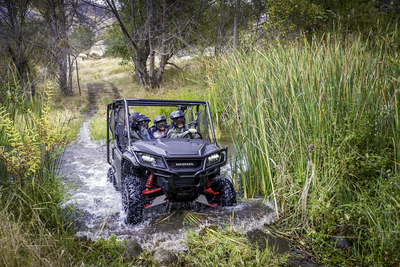 Over the last decade, UTV market gains have eclipsed motorcycles in the power-sports world. Highly versatile, upgradable, economical and most of all family-friendly, their appeal showed little sign of waning even amid market uncertainties introduced by the recent coronavirus pandemic. |
In late January, all indicators pointed to another robust 2020 for the market. Then came the coronavirus. In response, major UTV manufacturers took decisive measures to safeguard employees and customers and weather the national shutdown initiated in April, and aftermarket manufacturers and retailers developed new ways of selling. More recently, as the summer powersports season moves into full swing, there is optimism that a significant rebound will be possible.
On the OEM side, manufacturers reacted quickly earlier this spring. Market leader Polaris announced temporary closures of its two home-state plants in Roseau and Monticello, Minnesota, and at about the same time, PowerSports Business reported that Yamaha, which had previously paused U.S. production in March, would soon add staff reductions and furloughs at several American plants. Honda likewise suspended powersports production at its South Carolina manufacturing facility as of March and implemented furloughs for the majority of its U.S. salaried employees and support associates in April.
A relative newcomer to the UTV market, Roxor also closed down its Michigan production facility in response to a shelter-at-home order from that state’s governor. However, Dan Proffer, the company’s off-road vehicles marketing manager, told Motorcycle & Powersports News, “We are actively looking for opportunities to switch our production over to manufacturing products that can help with the COVID-19 fight. We will continually monitor this situation, but as of now, it’s business as usual, and we look forward to restarting production as soon as it is possible [and safe for all concerned].”
Proffer’s comments seemed to reflect a general if guarded optimism among powersports industry leaders that COVID-19 would prove a short-term obstacle along the market’s overall upward trajectory. Although there was uncertainty how the pandemic might affect consumer buying going into spring, a traditionally busy season for powersports, there were also positive signs that demand for vehicles and accessories could hold steady.
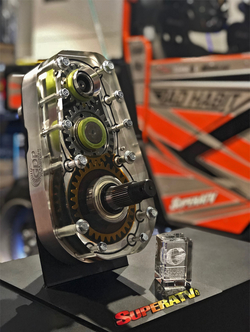 SuperATV makes a broad range of UTV products, but its GDP Portal is among its most popular for mud riders. The lift and gearing it provides allows them to run significantly larger tires without power losses. |
Amid the shutdowns, furloughs and economic disruptions, a number of powersports manufacturers and dealers loosened credit and financing terms to bolster new-vehicle buyers and existing customers. In fact, Wells Fargo Securities analyst Tim Conder told PowerSports Business that research suggested “we could see a meaningful bounce-back in [powersports] retail once visibility improves and stay-at-home orders are lifted,” as long as consumers were able to manage cash flow throughout the economic downturn.
Conder added that the industry’s retail momentum in March, coupled with other positive economic factors that preceded the pandemic, bodes well for an aggressive comeback into the 2021 calendar year. Meanwhile, mid-April analysis by Hedges & Company, a digital marketing agency serving the automotive and powersports aftermarkets, revealed a significant uptick in online sales of truck, off-road, performance and racing parts during the first weeks of the crisis.
But powersports retail has always followed a dealer-based model, and many U.S. dealerships were closed as each state issued its own set of directives for hunkering down in April. Those that were able to remain open as essential businesses often demonstrated a range of best practices to address health and safety guidelines, including sales by appointment, limiting showrooms to 10 people, enforcing social distancing, Zoom vehicle walk-arounds for potential buyers, online ordering, and direct vehicle shipments to customers. The question was whether such measures would prove enough to maintain profits as the nation reopened its economy under lesser but still stringent guidelines.
“I’ve been working with a lot of stores, which I call the innovators, that are selling powersports equipment without a person ever coming into the dealership,” said Rob Greenwald, president of The PowerSport Solution, a dealer consultant firm. “You’re showing them a motorcycle or whatever by FaceTime or Zoom and negotiating, then doing a complete deal and delivering the unit to the customer’s house and signing the paperwork in their driveway by setting up a small portable table [and wearing masks].”
Greenwald added that a quick anecdotal survey of several open dealerships he regularly works with showed significant drops in floor traffic but an even more significant rise in serious, qualified buyers.
“They’re selling at a much higher level to the people they’re getting,” he explained. “It’s a lot fewer shoppers and dreamers than buyers.”
Motorcycle & Powersports News editor-at-large Brendan Baker also predicted a burst of pent-up demand once closed dealerships reopen.
“This is the time of year when dealers are traditionally the busiest,” he said. “This is when everybody’s spring starts out and all the numbers are ramping up. All the people are getting their bikes out of storage and getting ready to ride.”
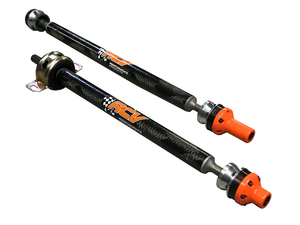 RCV Performance Products focuses on hard-core racing and performance products, with UTV product testing done in real-world racing environments. Prop shafts such as these for the Polaris XP Turbo and Turbo S are made to order and account for up to 10% of the company’s UTV parts sales. |
Side-by-Sides
Along with their motorcycles, power-sports enthusiasts will also be prepping and riding UTVs—lots of them. Once used mainly for utilitarian tasks, the vehicles have morphed into an enthusiast recreational phenomenon. In the West, they prowl the deserts. In the South, they power through mud. They take hunters, campers and off-road enthusiasts to outdoor locations reliably and in comfort. In fact, their sales numbers have continued to climb in recent years while motorcycle sales have more or less plateaued.
“They’ve taken a little bit of a bite out of ATVs, but not as much as you’d think, because ATVs have a much lower price point, so it’s a different kind of customer,” Baker observed. “We estimate the side-by-side market at around 500,000 new units produced per year. Probably a little more.”
UTVs have become a hit with consumers because they’re economical, family-friendly, versatile and easy to upgrade. Base models can run from $8,000–$15,000, with high-performance versions available for under $40,000—although upgrades can push the price tag much higher.
Among manufacturers, Polaris currently reigns as market king with its RZR and Ranger models. Other popular brands include Can-Am with its Maverick line, which encompasses an X3 Rs Turbo version; Yamaha with its Wolverine X2 R-spec; Textron with its Prowler; Arctic Cat and its Wildcat; along with Honda and its Pioneer series, to name a few. However, the category is extremely diverse, and SEMA market research has identified three distinct vehicle types:
- Sport models, which are more commonly found in the Western United States and are typically the most accessorized UTVs. Owners of those vehicles tend toward social pursuits, often riding with passengers and in groups.
- Multipurpose vehicles, which comprise the largest segment of UTV sales, with the highest volume residing in the South. Owners seek ultimate versatility with their vehicles and their modifications.
- Utility models, whose sales are strongest in the South and Midwest. Owners perceive and use their UTVs as workhorses, focusing on practicality and durability. They are the least likely to upgrade their vehicles and are the most solitary, frequently driving their UTVs alone.
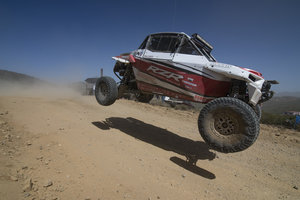 The rise of UTV motorsports, including several UTV classes in SCORE International Baja racing, has been a key market driver for enthusiast consumers. “Race on Sunday, sell on Monday” is very much alive in this powersports category. Photo courtesy: Joe Stokes/Get Some Photography |
SEMA research has further found that about 82% of UTV owners take an interest in upgrading and accessorizing their vehicles. Moreover, accessory decisions are made early, with most purchases occurring within the first three months, often at dealerships or directly through the original equipment manufacturer.
Their modifications tend toward enhancing overall functionality and versatility, since many owners use their UTVs year-round for varied driving activities across diverse terrains. Personal sources such as dealers, friends and family have the greatest impact on buying decisions.
Not surprisingly, most UTV households own trucks (particularly pickups), leading to about 18% of owners purchasing accessories for their tow vehicles as a direct result of purchasing an UTV. Industry experts also note a high crossover into ATV and motorcycle ownership as well. It’s not unusual for a household to have a mix of powersports vehicles.
When accessorizing, UTV owners have traditionally focused on safety over speed, durability over performance, and practicality over excitement—but that may be changing, thanks to the growth of UTV motorsports.
RCV Performance Products, based in Loves Park, Illinois, manufactures an array of American-made UTV driveline parts aimed at the performance racing market.
“We pride ourselves on quality, and with that quality comes a price, so we focus primarily on the high-end side of racing,” said Ricky Berry, the company’s marketing director. “We’re in the winning cars of the Baja 1000, King of the Hammers, Dakar, even a lot of the rock bouncing on the East Coast and hill climbing. We work with a lot of racers on development, trying to find out what’s best, then we’ll work that into our product line for the general public.”
Berry said there is little doubt that the increasing popularity of UTV motorsports is influencing weekend-warrior consumers.
“Everybody wants to be like the best,” he said. “The guy who’s building in his garage is looking at magazines. He’s looking at websites with the best—the top driver, the top machine and whatever the latest technology is. That trickle-down effect is very real.”
While the company originally focused on Polaris applications, it widened its applications to include Can-Am and Yamaha as UTV motorsports grew. However, the company still finds desert racing to be the ultimate R&D platform.
“The desert world is the most abusive environment for an axle—the heat, the grease, the wear—so many technological advances have come from that desert-race world for us,” he said.
Still, UTVs are right at home in all sorts of environments when properly upgraded, including the muddy hills, pits and trails of the South.
“That’s a huge market for us, the mud guys,” said Tyler Greves, media manager for SuperATV, which is based in Madison, Indiana.
The company recently opened a warehouse-distribution facility in Shreveport, Louisiana, and makes aftermarket UTV parts ranging from axles to long-travel kits, including applications especially popular with mud riders. In fact, the ability to rapidly ship parts to mud-configured UTVs factored into the company’s decision to open a second location, which also features a showroom.
“Mud guys love going big,” Greves said. “That’s kind of where we got our name started. We were making lift kits and A-arms to allow you to get more ground clearance and put a bigger tire on the machine. When you talk to mud guys, they buy a new machine and the first question they ask is, ‘What size tire can I run without rubbing?’ It’s pretty crazy. We’re up to people running 60-in. tires on these UTVs that come from the factory with a 29 or a 30.”
Responding to that market, SuperATV produced what Greves called a “game-changing” GDP Portal, a portal gear lift utilizing a hub-mounted box to provide gear reduction as well as a lift kit.
“We have 4-, 6- and 8-in. boxes giving you the amount of lift,” he explained. “Then we have different gear-reduction options so that you’re able to put that big tire on. That helps turn the gears and give you back that power.”
 Energy Suspension entered the UTV market with polyurethane bushings and other durable components for Polaris and Can-Am consumers desiring longer-lasting parts for the extreme environments in which their vehicles travel. The company is now eyeing other brands and applications in the category. |
Family Style
Because UTVs are frequently family conveyances, with adults and children sharing rides and even taking turns driving, there is no end to the aftermarket goodies available.
“We offer pretty much anything and everything from a lug nut up to a turbo kit, the portals, and everything in between—windshields, roofs, doors, A-arms, axles, you name it,” Greves said. “That’s what has been really cool with the ATV scene. There’s so many different companies out there making different things in different styles. This is an industry growing like wildfire because you can go out and buy one and just have a blast. And if you want to, they’re more than capable to do more things than you could ever dream of.”
As of late April, COVID-19 hadn’t slowed consumer demand for SuperATV’s products, though Greves did note that smaller shops might have seen more of an impact, depending on state and local shutdown orders. However, SuperATV was doing enough business that it could adapt its windshield manufacturing capabilities to making personal shields and intubation hoods to aid hospitals and first responders during the crisis. Going forward, that exercise may open a potential crossover market to shield manufacturing for casinos, gas stations and other businesses seeking to protect workers and customers.
Walter Schnapp, heavy-duty/power-sports manager at Energy Suspension in San Clemente, California, also reported that the suspension-component company was successfully navigating the changing business climate.
“We’re still a completely U.S.-made product, so we haven’t been affected by supply-chain issues or anything like that, so we’re weathering this really well,” he said.
Long known for its polyurethane suspension replacement parts, the company has also found more recent success in the UTV space, notably for Polaris and Can-Am models. Schnapp said UTV consumers are universally looking for all types of vehicle components that are more durable and longer-lasting than factory originals.
“We were getting a lot of reports of longevity issues with UTV bushings,” he said. “I’ve heard instances where people are saying they get like 150 hours out of the OEM bushings. Replacing them with polyurethane, you’re seeing just a massive increase in longevity—three or four times longer. We try to use our material to make people’s lives easier. We’re trying to solve problems wherever we can.”
Schnapp said that the segment continues to grow, adding that even the U.S. military is now experimenting with UTVs for rapid combat operations.
“We eventually would like to be able to make components for those vehicles,” he said. “A lot of the tactical vehicles that are going to be deployed in the future are going to be very much based on the UTV, and that makes sense—light load and a lot of other things that are beneficial in a battlefield environment. We hope to be able to use our polyurethane to good effect in those kinds of areas. And then we’re talking to a lot of different outfits out there that are employing UTVs on the industrial side—mining, farming, you name it.”
| Sources | |
Energy Suspension 1131 Via Callejon San Clemente, CA 92673 949-361-3935 www.energysuspensionxd.com Motorcycle & Powersport News Babcox Media 3550 Embassy Pkwy. Akron, OH 44333 330-670-1234 www.motorcyclepowersportsnews.com PowerSports Business 10405 6th Ave. North, Ste. 210 Minneapolis, MN 55441 763-383-4492 www.powersportsbusiness.com RCV Performance Products 611 Beacon St. Loves Park, IL 61111 815-877-7473 www.rcvperformance.com SCORE International 465 S. Meadows Pkwy., Ste. 6 Reno, NV 89521 775-852-8907 www.score-international.com SuperATV 2753 Michigan Rd. Madison, IN 47250 855-743-3427 www.superatv.com The PowerSport Solution Rob Greenwald powersportfi@aol.com 404-273-6156 www.powersportsolution.com |
Motorcycle Culture
While the UTV scene continues to expand, the motorcycle segment has continued rolling along at a more subdued pace as it grapples with changing consumer demographics.
“The Baby Boomers have represented a disproportionate size of the market for many, many years—decades, actually,” Baker explained. “As Baby Boomers grew up, they went bigger. They started with a smaller Harley or a Triumph or something like that and moved into bigger and bigger motorcycles to where Harley was only producing heavyweight bikes for the most part. I think the last recession around 2009 was when a lot of those people bought their last bikes. They’re just not into riding as much now. With [car drivers] phoning and texting, things got overly dangerous. It’s always been dangerous, but street riding has been on the decline for the most part.”
Baker said that off-roading has become the bigger segment for motorcycles.
“Right now, it’s between dirt bikes and dual-sport bikes, which kind of count as off-road/on-road,” he said. “Guys want to ride the big KTM adventure bikes, so the motorcycle market has taken a bit of a hit and a redirect. Harley, Indian and some other companies have said that they’re attempting to make more entry- and mid-level bikes that appeal to Millennials.”
And while electric bikes have grabbed headlines recently, Baker doesn’t expect them to make much headway in the market anytime soon.
“A lot of people looking at motorcycles still like the engine sound,” he said. “Maybe they drive a Tesla, but they still want a gas-powered motorcycle, especially if they’re going off-roading. There’s range anxiety, and those engines are so small. A lot of people think it’s a long way off before we see electric, although the technology is getting better and better.”
As with UTVs, aftermarket favorites for motorcyclists include wheels and tires, audio upgrades, GPS, hands-free communications, improved lighting, riding and safety gear, and lifestyle apparel. Like UTV treks, street and off-road motorcycle rides are often social and recreational activities, so there are lifestyle crossover opportunities with outdoor and
sporting pursuits.
All that said, what will the powersports market look like in the final half of 2020? As of press time, the situation was highly fluid, with a lot riding on factors such as how swiftly the U.S. economy could open, consumer cash flow and confidence, and manufacturer and dealer agility in rising to health and safety challenges—not to mention having the business resources to weather the downturn. Nonetheless, aftermarket businesses were still doing what they do best going into spring: innovating, problem solving, and continuing to build and sell the products that excite consumers.
Greenwald, for one, had little doubt that the industry would rebound quickly. He predicted that consumers will want to get out and re-experience the world once restrictions are lifted and money returns, and powersports will feature prominently in their adventuring.
“When you’re in the powersports industry, you’re selling fun,” he said. “We sell lifestyle.”


